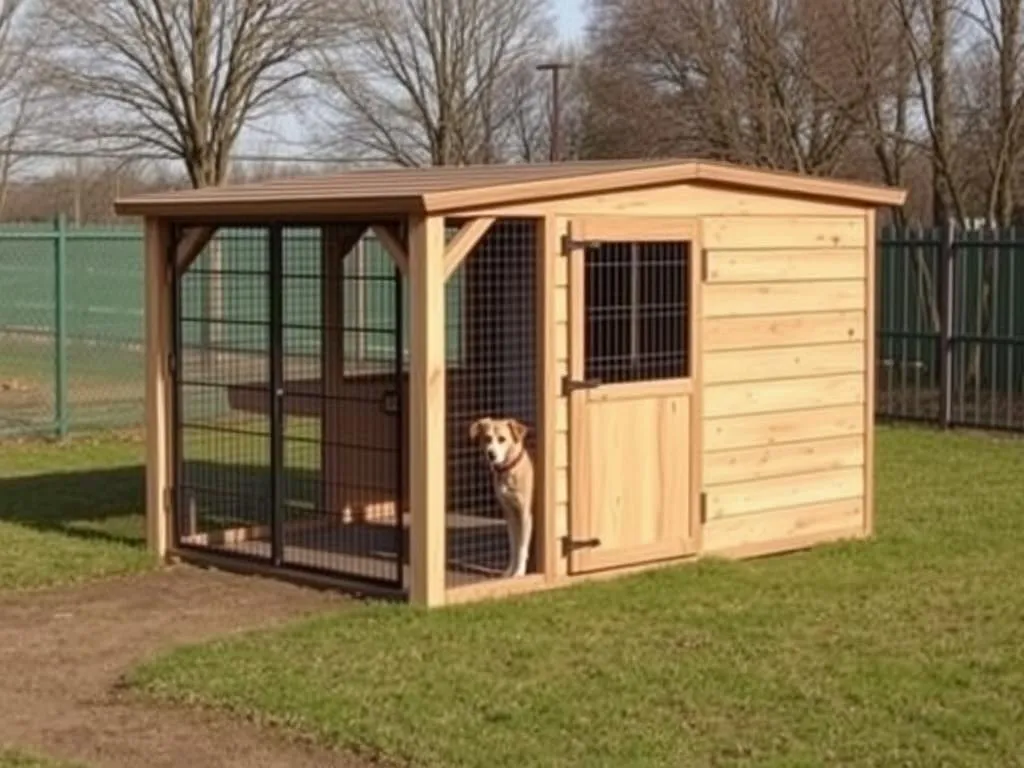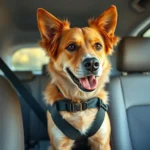
Creating a dog run at home can be one of the best decisions you make for your furry friend. A dog run is a designated area where your dog can play, exercise, and socialize in a safe environment. Not only does it provide a space for your dog to burn off energy, but it also fosters mental stimulation and promotes good behavior. This article will guide you through the essential steps to create a functional and enjoyable dog run that meets your pet’s needs.
Planning Your Dog Run
Define Your Purpose
Before diving into the construction of your dog run, it’s important to clarify your goals. Are you looking for a space for your dog to exercise, train, or socialize with other dogs? Understanding your dog’s needs is crucial. For example, high-energy breeds may require a larger space to run, while smaller dogs may need a more contained area for play.
Assess Available Space
Next, assess the available area in your yard or designated space for the run. Measure the dimensions of your yard to determine how much room you can allocate for the dog run. Keep in mind that larger breeds typically require more space to roam and play. A general guideline is to provide at least 100 square feet for smaller dogs and up to 300 square feet for larger breeds.
Check Local Regulations
Before you start building, it’s wise to check local regulations regarding pet enclosures. Zoning laws may dictate the type of fencing you can use or the maximum size of the run. Additionally, some areas may require permits for construction. Researching these regulations will save you time and potential legal issues down the line.
Choosing the Right Location
Ideal Placement
The location of your dog run is critical for both dogs and owners. Consider factors such as sunlight and shade. Dogs need a balance of both; they should have access to shady spots to cool off during hot weather. Proximity to your house is also important for supervising your dog while they play. Ideally, your dog run should be easily accessible from your home.
Safety Considerations
Safety should be paramount when selecting the location for your dog run. Evaluate any potential hazards nearby, such as toxic plants or sharp objects. Additionally, ensure that your dog run is situated away from busy roads or areas where your dog could escape or encounter danger.
Design Options for Your Dog Run
Types of Dog Runs
When designing your dog run, consider the different styles available. Here are a few popular options:
- Fenced Runs: These are enclosed areas that provide maximum security for your dog.
- Open-Air Runs: These are more spacious and allow for greater airflow but may require additional supervision to ensure safety.
- Enclosed Runs: These offer protection from the elements and can include roofs or partial coverings.
Each type has its pros and cons, so choose one that fits your dog’s needs and your lifestyle.
Size Recommendations
The size of your dog run should be tailored to your dog’s size and activity level. For a single dog, a minimum of 100 square feet is recommended, but larger breeds may need significantly more space. If you have multiple dogs, consider expanding the area to accommodate their social interactions, ensuring that each dog has enough room to play without crowding.
Fence Materials
Selecting the right materials for your dog run is essential for durability and safety. Here are some common options:
- Wood Fencing: Offers a natural look but may require regular maintenance to prevent rot.
- Chain Link Fencing: Durable and cost-effective but may not be aesthetically pleasing.
- Vinyl Fencing: Low-maintenance and weather-resistant, making it a popular choice.
- Mesh Fencing: Lightweight and easy to install, but may not be suitable for larger dogs.
Consider the costs, durability, and maintenance needs of each material when making your choice.
Building the Dog Run
Tools and Materials Needed
Before starting the construction, gather the necessary tools and materials. Here’s a list to get you started:
- Measuring tape
- Posts and fencing material
- Concrete (if needed for post installation)
- Hammer or power drill
- Wire cutters (for chain link or mesh)
- Level
- Shovel
- Optional: flooring materials like gravel or artificial turf
Buying materials in bulk can often lead to cost savings, so consider sourcing everything you need from a local hardware store or online.
Step-by-Step Construction Guide
Building your dog run can be a rewarding DIY project. Follow these steps for a successful build:
Marking the Area
Begin by marking the area where you plan to build the dog run. Use stakes and string to outline the perimeter. This will help you visualize the space and ensure you stay within the designated area.
Installing the Fence
Once the area is marked, start installing the fence. Depending on your chosen material:
- For wooden or vinyl fencing: Dig holes for the posts using a shovel. Ensure they are about 2 feet deep for stability. Place the posts in the holes and fill with concrete to secure.
- For chain link or mesh fencing: Attach the fencing material to the posts according to the manufacturer’s instructions.
Make sure the fence is tall enough to prevent your dog from jumping over and secure enough to withstand digging.
Adding Flooring (if necessary)
Depending on your yard’s surface, you may want to add flooring to your dog run. Popular options include gravel, sand, or artificial turf. Each material has its benefits, such as drainage and cleanliness. Ensure the flooring is comfortable for your dog to walk on.
Incorporating Shade and Shelter
Don’t forget to add elements that provide shade and shelter from the elements. A simple doghouse or a shaded area with a tarp can help keep your pet comfortable during hot days.
Finalizing the Setup
After building the dog run, it’s important to check for safety and comfort. Inspect the fencing for any sharp edges or gaps that could pose a risk. Additionally, consider adding features such as:
- Toys for mental stimulation
- Water stations for hydration
- Benches for you to sit and supervise
Enhancing the Dog Run Experience
Landscaping Ideas
To make your dog run more inviting, consider dog-friendly landscaping options. Certain plants, such as lavender, rosemary, and marigolds, are safe for dogs and can add beauty to the space. You can also incorporate agility equipment, tunnels, and climbing structures to create a stimulating environment for your dog.
Maintenance Tips
Regular maintenance is essential to keep your dog run safe and clean. Here are a few upkeep routines:
- Regularly check the fencing for damage or wear.
- Clean the area to remove waste and debris.
- Trim any overgrown plants that may pose a hazard.
- Ensure water stations are clean and filled.
Seasonal considerations may include adding mulch in the winter for warmth or cleaning up leaves in the fall.
Training in the Dog Run
Your dog run can also be an excellent space for training. Use positive reinforcement techniques to teach your dog commands and tricks in a distraction-free environment. This space can also be perfect for socialization, allowing your dog to meet other pets in a controlled setting.
Common Mistakes to Avoid
Overlooking Safety Features
One of the most common mistakes is overlooking safety features when constructing a dog run. Regularly check the fence for secure locks and gaps. Ensure there are no hazardous items within the run that could harm your dog.
Neglecting Comfort
Comfort should not be an afterthought. Ensure that your dog run provides adequate shade, water access, and shelter from the elements. A well-thought-out space will encourage your dog to enjoy their time outdoors.
Failing to Supervise
While your dog run provides a safe space, it’s essential to supervise your dog while they are playing. This not only prevents accidents but also allows you to monitor their interactions with other dogs or toys, ensuring a fun and safe experience.
Conclusion
Building a dog run can significantly enhance your dog’s quality of life and provide a safe space for them to play and exercise. By following the steps outlined in this guide, you can create a customized environment that caters to your dog’s needs. Remember to plan carefully, choose the right materials, and maintain the area regularly.
Your dog will thank you for it, and you’ll enjoy the peace of mind that comes with knowing your furry friend has a safe haven to explore and enjoy.









